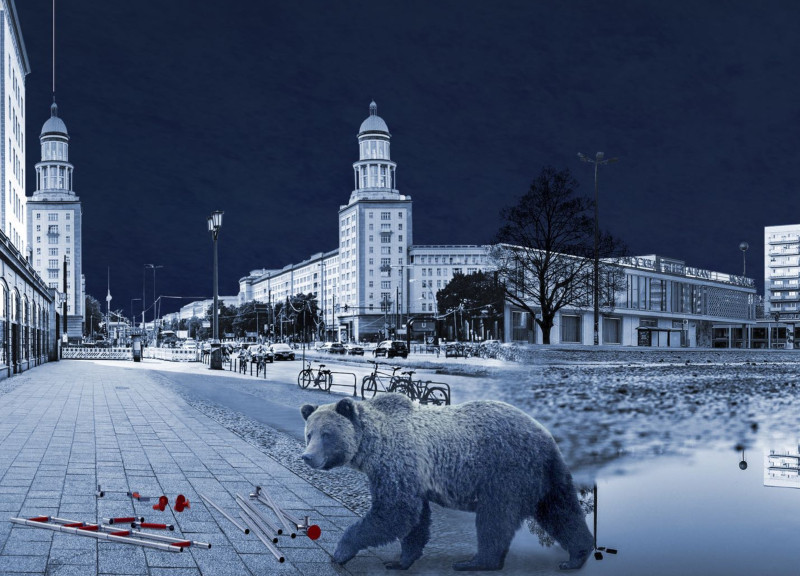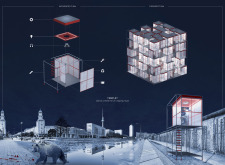5 key facts about this project
Spatial Configuration and Materiality
The spatial configuration of "Templet" is characterized by interlocking modules that create a dynamic interplay of open and enclosed areas. This arrangement allows for varied forms of engagement, from intimate solo practices to larger communal performances. The choice of materials enhances the project's functionality and aesthetic appeal. The primary use of steel provides structural integrity, while extensive glass panels promote visibility and light penetration, encouraging an inviting atmosphere. Natural wood materials, likely used for flooring, add warmth to the environment, fostering a sense of comfort for participants.
Unique Design Approach
What sets "Templet" apart from conventional dance facilities is its focus on enhancing the relationship between the performers and the audience. The design promotes interaction through its elevated configuration and porous boundaries, allowing for a continuous dialogue between the inside and outside. This encourages passersby to engage with the space, making the experience of dance accessible to a broader audience. The dual thematic approach of "Introspection" and "Perspection" within the project's layout highlights the versatility of the space, catering to both individual reflection and community engagement.
Exploration of Architectural Elements
"Templet" employs distinct architectural elements that contribute to its overall effectiveness. The modular design allows for adaptability within the space, accommodating various activities beyond dance performances. Multi-level engagement areas provide opportunities for different experiences, encouraging movement throughout the structure. The integration of sound and lighting systems is tailored to enhance the atmospheric qualities of the space, aiming to create an immersive environment for both performers and observers.
For a deeper understanding of "Templet," including its architectural plans and sections, explore the project presentation to gain further insights into its design elements and architectural ideas.























